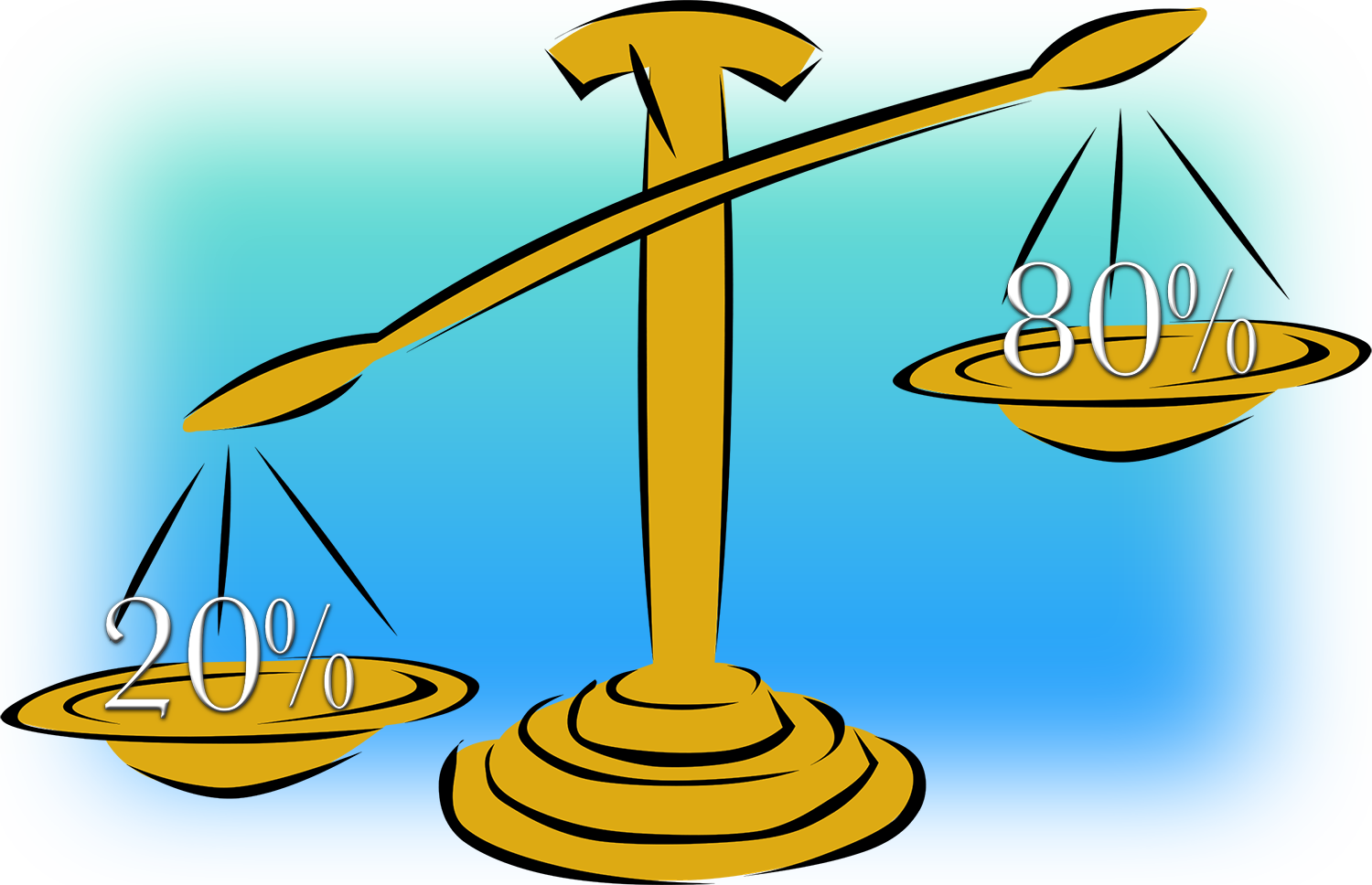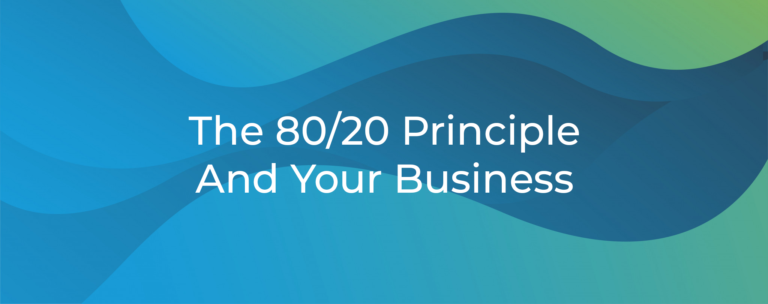The 80/20 Principle, also known as The Pareto Principle, states that 80% of the results are derived from 20% of the causes. Those familiar with the concept generally agree that it is more or less universally applicable in virtually all circumstances. As bold of statement as that may be, you just might come to find that it really is true.
Where did this all originate, what does it actually mean, and how does does it apply to your business? Let’s dig in and find out!
The Pareto Principle Origins
Once upon a time… or more specifically in 1896 at the University of Lausanne in Switzerland, an Italian economist named Vilfredo Pareto observed that 80% of the land (ie. wealth) in Italy was owned by 20% of the population. Following this initial discovery, Pareto would go on to perform surveys on several other countries finding that a similar distribution of wealth also applied.
Pareto’s research was then noted, refined, and further developed by a Romanian-American engineer and management consultant named Joseph M. Juran in 1941. It was Juran who would propel this concept into widespread understanding and utilization.
Examples of the 80/20 Principle
As mentioned, this concept would ultimately be observed as having far-reaching applications and implications, across society, business, and even nature. Some well-known examples include:
- 20% of your investments produce 80% of your growth
- 20% of your customers generally represent 80% of your sales
- 20% change in behavior produces 80% carbon footprint reduction
- 80% of customers only use 20% of a software’s features
In the United States, the top 20% of earners paid roughly 80% of Federal Income Taxes in 2000, 2006, and 2018. Additionally, Microsoft has reported that by fixing the top 20% of the most-reported bugs, that 80% of the related errors and crashes in a given system are eliminated. Or as Lowell Arthur stated, “20 percent of the code has 80 percent of the errors.”

Perhaps the most intriguing aspect is the observance of this principle in nature. Pareto himself observed that 20% of the pea pods in his own garden contained 80% of the total peas. Also, for the record, 20% of bird species make up 80% of all bird sightings.
Given that The Pareto Principle is a valid and observable phenomenon, let’s discuss exactly how you can utilize this knowledge to benefit your own business.
What Does 80/20 Mean For Your Business?
There are innumerable ways that you can apply the 80/20 principle in order to grow your business. To begin exploring these, let’s also take a clear look at some of the ways it already does affect business:
20% of your customers generate 80% of your profits – Conversely then, 80% of your customers generate a mere 20% of your profits. This isn’t to imply that you should ignore the vast majority of your customers in favor of catering to the more-profitable minority, but you should consider the requests and feedback from that 20% perhaps more particularly, as this is the sector of customers that are poised to best help your company grow.
80% of budget overruns are caused by 20% of expenses – It is always worth periodically auditing your spending to ensure that your business spends it’s capital intelligently. You might be surprised at where some of the money goes and what sort of return you are actually receiving on that investment.
80% of complaints come from 20% of your customers – Again, this isn’t at all to say that any sector of your customer base should be ignored, however you may want to analytically determine if the 20% of your customers who complain and cause the most issues are also in the 80% of customers to generate the least profit. If it turns out those demographics overlap, then some experts agree that it may become necessary to fire some customers. Doing so would potentially make room for customers that are more in alignment with your goals as a business owner.
You can also apply this concept in other ways related to your marketing and social media strategies. For example, social media content should ideally be 20% about your brand and 80% content that interests and engages your audience. This content strategy will encourage interaction with your audience, as well as increased share-ability of your posts, which will only serve to grow your audience.
In Closing
With the understanding that 80% of what you get is the direct result of 20% of what you do, if you systematically optimize that important 20% then you will experience a cascade effect of benefits across your entire business.
As we know, what gets measured gets managed, so determining how the 80/20 principle applies to your life and business should certainly be considered worthy of measuring, so that you can manage to achieve maximum results in the most efficient way possible.
As always, if you have any feedback or comments, please let us know. We are here to help in the best ways we can. You’ll find us on Discord, the cPanel forums, and Reddit. Be sure to also follow us on Facebook, Instagram, and Twitter.


